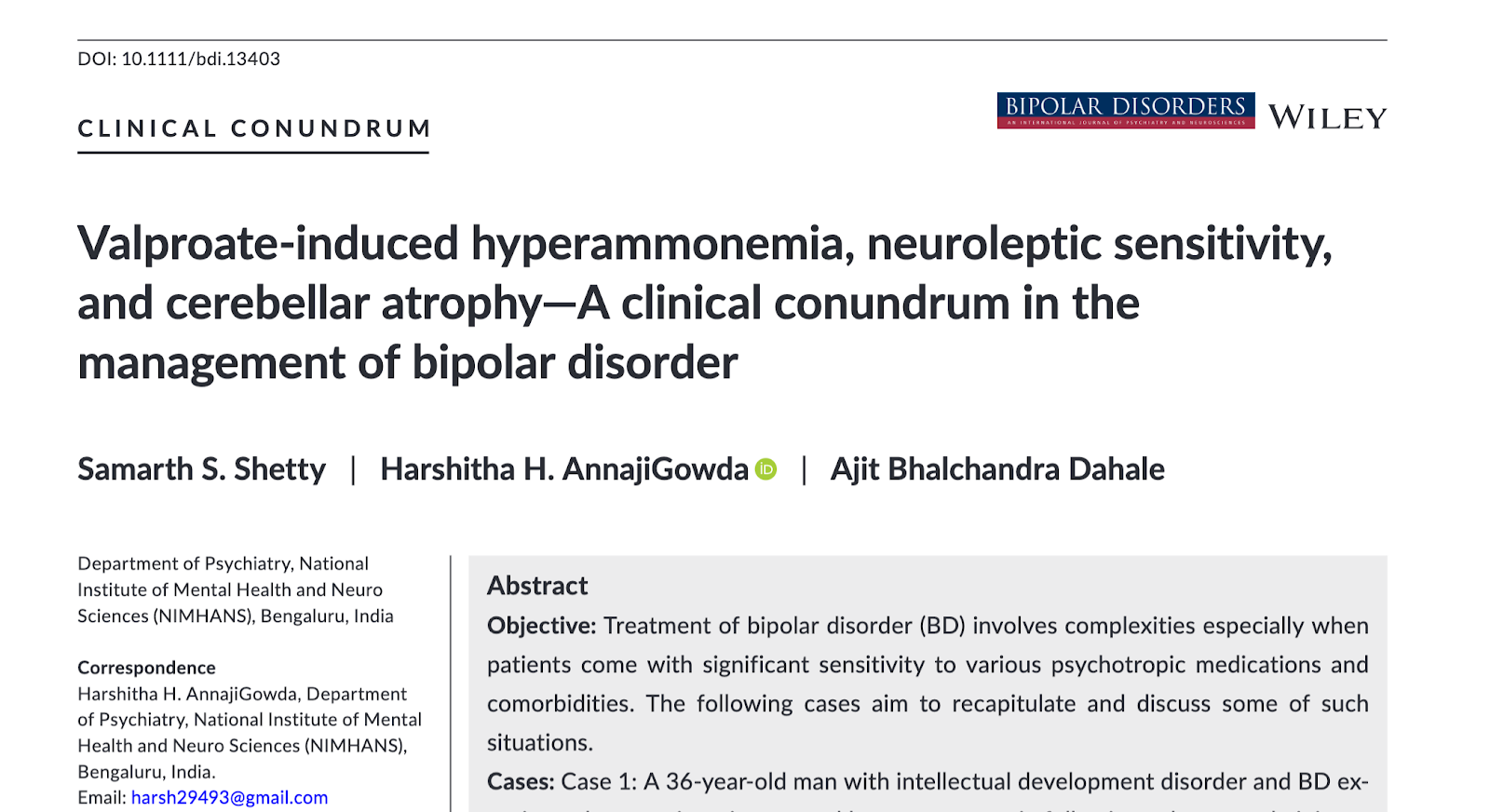Complex Bipolar Disorder Patients Treated With ECT: Two Cases From India
Out on PubMed, from authors in India, is this case series:
Valproate-induced hyperammonemia, neuroleptic sensitivity, and cerebellar atrophy-A clinical conundrum in the management of bipolar disorder.
Bipolar Disord. 2024 Jan 22. doi: 10.1111/bdi.13403. Online ahead of print.PMID: 38253983
The abstract is copied below:
Objective: Treatment of bipolar disorder (BD) involves complexities especially when patients come with significant sensitivity to various psychotropic medications and comorbidities. The following cases aim to recapitulate and discuss some of such situations.
Cases: Case 1: A 36-year-old man with intellectual development disorder and BD experienced catatonia, seizures, and hyperammonemia following valproate administration. Treatment involved electroconvulsive therapy (ECT) and a tailored medication regimen, ultimately leading to stability. Case 2: A 63-year-old man with long-standing BD exhibited resistance to lithium and valproate of late, having co-existing essential tremors and cerebellar atrophy. Multiple medication trials led to side effects, requiring ECT for symptom improvement, followed by a carefully adjusted maintenance regimen.
Conclusion: Medication side effects can pose major challenges in treatment of BD. Comprehensive evaluation and monitoring are essential. ECT can prove valuable in such cases. There is pressing need to develop more safer treatment alternatives, especially considering the progressively ageing society.
Keywords: bipolar disorder; cerebellar atrophy; hyperammonemia; neuroleptic sensitivity; valproate.
The article is here.
And from the text:
Key message
- ECT can be a favorable treatment option in acute cases involving multiple comorbidities and heightened neuroleptic sensitivity.
- Periodic clinical and biochemical assessments for side effects are suggested, especially in those with cerebel-lar atrophy.
Learning points
- A comprehensive approach is crucial: including medical conditions, potential interactions, and individual sensitivities.
- Innovation in mood stabilizers: The need for safer alternatives to current mood stabilizers and antipsychotics is critical, especially for patients with medical comorbidities.
- Further research assessing the utility of ECT and other neuromodulation techniques in the long-term management of bipolar disorders would be helpful.
Here are two cases of bipolar disorder with complex pharmacotherapy with complications, rescued temporarily with ECT (for catatonia and mania). Both patients were treated with lithium, but the authors do not consider lithium as a possible cause of their cerebellar atrophy. No maintenance ECT was prescribed, and one can only speculate about better outcomes if ECT had been prescribed earlier and more comprehensively.
I have often written about the neglect of ECT as a treatment for severe bipolar disorder; so every bit of evidence helps.
Kudos to these colleagues for this contribution to the ECT-in-bipolar-disorder literature.



Comments
Post a Comment